We recently asked our newsletter subscribers what questions they had about their beloved small exotics. Below, Dr. Micah Kohles provides answers to some of the questions we received!
Update on RHDV2
From Jo G.:
“May we please get an update on RHDV2?”
Dr. Kohles:
There is good news on this front! The spread of RHDV2 has slowed, and the Medgene vaccine against it is now available in almost all US states. Continue practicing good prevention techniques and get your rabbits vaccinated if you can. You can learn more about the movement of RHDV2, prevention tips, and any new cases on the following two websites: RHDV2 Information Website and Rabbit.Org Foundation.
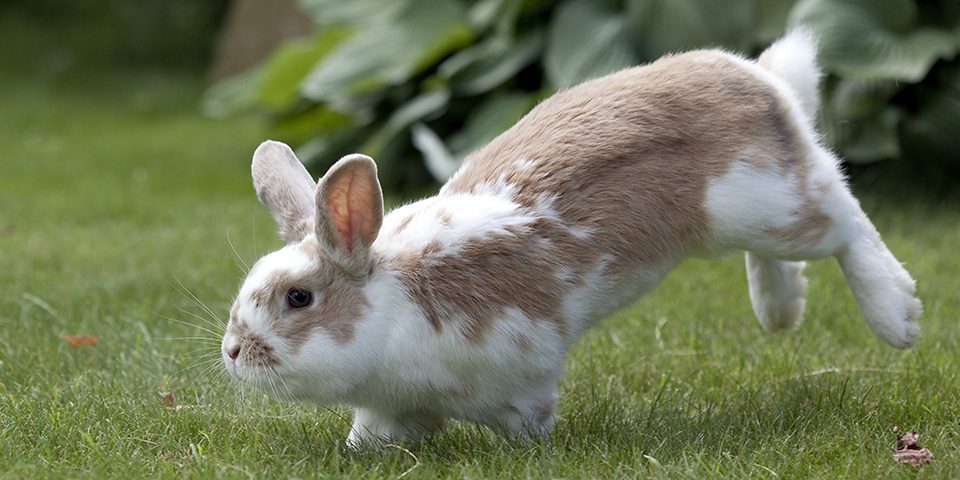
Preventing Mites and Other Ectoparasites
From Courtney G.:
“Are there any biosecurity measures I can take to help my rabbit not contract mites again? He got Revolution from his vet already, but I was just wondering if there was more I could do for him. Thank you!”
Dr. Kohles:
Ectoparasites can affect any rabbit household without warning, leaving your rabbit itchy and unhappy, and you dealing with the difficult task of getting rid of the parasites. Here are some tips to help prevent ectoparasites.
Regular Grooming
Regularly brushing your pet’s fur can help break up mats and remove loose hair that tends to provide extra hiding spots for mites. By regularly grooming, you can sometimes catch early signs of mites before your pet’s condition worsens. Spending time caring for your little one’s coat in this way also allows you to bond with your pet.
Keeping Environments Clean and Spacious
A clean environment is one of the most important things you can do to prevent mite infestations. Ensuring that bedding is changed regularly keeps their home clean and dry. Daily spot cleaning allows you to notice any changes to their appetite or water intake, as well as changes in their urine output or stool texture. Noticing potential issues related to input or output keeps your pet at peak health and gives them a better chance to fight off a parasitic assault. Ensuring that they have plenty of room and enrichment also lowers the environmental stress that can be caused by overcrowding and a lack of exercise.
Regular Vet Visits
Keeping up with routine veterinary visits is also extremely important to make sure your little one is in peak health. Your vet can provide guidance for a parasite prevention program for everyone in your home. Ensure that all of your pets are taken care of so parasites are less likely to take advantage of poor or declining health.
Avoid Contact with Outdoor Animals
Keep your pets from interacting with outdoor animals, as outdoor animals have higher chances of being hosts to parasites. This method of prevention can limit the opportunities that parasites have to end up inside your home.
If you notice that your little one has mites, fleas, or other ectoparasites, seek assistance from your veterinarian right away. We have more information about parasite treatment and prevention in small animals in this blog post.
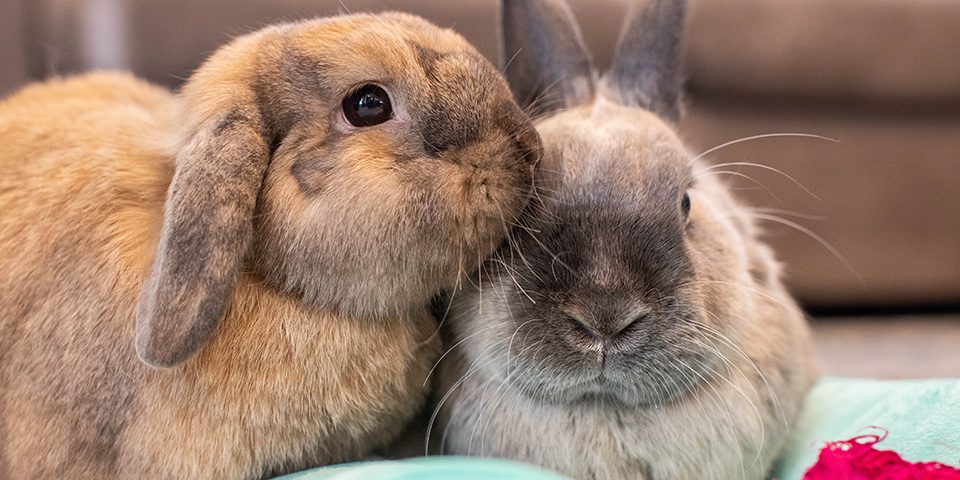
Supporting Blind Pets
From Susan B.:
“Our rabbit Juno developed glaucoma in both eyes shortly after losing her partner bun of 8 years. The medications didn’t relieve the issue and so she had injections in both eyes that resulted in her losing her vision. She was always a feisty, adventurous bunny, even at 9, but with the loss of her vision she has become much quieter and less curious. She still traverses the house from the kitchen (where her hay bin and food are) to the living room where she spends her time in her tunnel or in her covered box. We miss our nosy, feisty, pushy bunny and are wondering if there is anything we can do to make her more comfortable to let her personality out.”
Dr. Kohles:
I’m very sorry to hear about Juno’s struggles. Especially for a prey species, losing eyesight can be difficult to manage. Above all, be patient with your bunny as they adjust to their new world. Here are some suggestions to help them adjust.
Provide a safe and predictable environment
Create a predictable environment for your blind pet. Go through their living and play areas and remove potentially hazardous items (i.e. sharp objects). Minimize the amount of clutter and provide a wide-open space for them without surprises to stumble over. Block off access to stairs or other high areas to prevent falls. Refrain from moving objects like furniture and food/water dishes around in the spaces they have regular access to. Keeping items in consistent spots will help them develop a memory of where obstacles and food occur so they can successfully navigate.
Utilize auditory and tactile cues to help them navigate
Since your little one will rely heavily on senses like hearing and touch to navigate their environment, take advantage of this to make their living space more recognizable. Place differently textured rugs in front of their cage or where you leave their food and hay. If they are hesitant or seem to be searching for you when navigating, make a gentle noise to help them reorient themselves. Before petting or handling your bunny, always announce yourself by speaking to them in a clear voice and using certain words or phrases to avoid startling them.
Your bunny will also rely more heavily on their sense of smell for navigation—this will be especially critical in them finding their food, hay, water, and appropriate places to relieve themselves. Make sure these areas are not moved around and remain consistent so their sense of smell isn’t “tricked.”
Establish a daily routine
Keep a predictable routine to help your blind friend adjust. A consistent daily schedule of food, playtime, and snuggles will allow your bunny to accurately predict what will happen next. This will let them feel more secure in their environment.
Have regular vet checkups and monitor behavior closely
Blind pets are more at risk of accidental injury. Monitor them closely and take them to regular vet checkups. Remember that blind eyes may need specialized care, so work closely with your vet to make sure that Juno has everything necessary for eye care.
Provide mental stimulation by engaging other senses
Once your bunny grows more comfortable with their surroundings, they will need enrichment to stay mentally engaged. Provide toys that engage senses other than vision. Try offering the following kinds of toys:
- Toys with rattles or shakers
- Toys that have rabbit-friendly scents
- Toys that you can use to hide aromatic herbs like cilantro, parsley, or mint
- Toys that have different textures.
Pay close attention to your bunny’s behavior to learn what smells and sounds are interesting versus what smells and sounds seem to make your pet unsure of their surroundings. Promote interaction with enrichment that seems exciting, and discontinue the use of toys that seem to make your pet uncertain. Toys that they are lukewarm on can always be tried again at a later date.
Consider a buddy
If your household can handle another bunny, having a friend will not only provide company and mental stimulation, but they can also help guide and support your blind friend. We have resources about bunny bonding if this is a path you would like to consider more.
We wish you and Juno all the best!

Dealing with Broken Teeth in Guinea Pigs
From Janet G.:
“My guinea pig Frosty turned 1 year old on Christmas. He has broken his top tooth 3 times since I got him at 5 months old. My question is, what could be the cause of this? He’s an only piggy and I don’t know what’s causing it, neither does the vet. I’m just wondering if you have any ideas.”
Dr. Kohles:
I’m sorry to hear about the trouble Frosty has had with his teeth, especially since he is so young! While guinea pigs’ teeth never stop growing and your little one’s tooth will grow back, it’s still reasonable to be concerned. There are many reasons why this could be happening.
What causes broken teeth?
Trauma
Acute damage from a fall or collision can cause a broken tooth. However, trauma can also be caused by chewing on something hard, like cage bars or inappropriate toys made of hard materials. Be sure to only provide appropriate chew toys, and do what you can to re-train your guinea pig to not chew on the bars of their enclosure if this is a behavior you are regularly witnessing.
Malocclusion
A malocclusion occurs when your guinea pig’s teeth don’t line up correctly. Misalignment can lead to overgrowth and the uneven wear of teeth, and sharp edges of teeth due to poor dentition can result in damage to other teeth or soft tissues in the mouth. If you suspect your pet’s teeth may be maloccluded, this is a very good reason to visit your veterinarian. If they confirm a malocclusion is at play, they’ll be able to properly trim your pet’s teeth.
Genetics
Some guinea pigs are born with a predisposition to dental problems. Guinea pigs with parents who have known problems have a higher chance of suffering from the same dental issues. If you purchased your pet from a breeder or adopted from a rescue who would know your guinea pig’s family history, ask questions about your pet’s parents and any health issues they might have. If you purchased your pet from a pet store or adopted your pet as an adult, it might not be possible to either confirm or rule out your pet’s genetic predisposition to dental issues.
Nutritional deficiencies
Guinea pigs lacking proper nutrition, such as those suffering from a vitamin C deficiency, can be more susceptible to dental issues due to weakened teeth. Guinea pigs that are not receiving enough hay to grind down their teeth may also be at risk for dental health issues.
Infections
Infections and abscesses in the mouth can weaken teeth and make them more prone to breaking. These issues can be caused by many different situations. Seek veterinary assistance if you notice any changes in your guinea pig’s diet or behavior, if your pet is losing or gaining weight, or if you see any lumps or swelling on your pet’s head or body.
Age-related changes
As your guinea pig ages, their teeth can become more brittle and prone to breakage. Older guinea pigs also tend to be more prone to dental malocclusion or overgrowth. Offering a diet that supports your guinea pig as they age, such as our Essentials Senior Guinea Pig Food, can be a helpful prevention method to avoid some dental issues as your guinea pig experiences their golden years.
Your guinea pig has a broken tooth, now what?
Consult with your veterinarian
See your veterinarian as soon as possible. Broken teeth can be very painful and may affect your guinea pig’s ability to eat, which is an urgent situation. Your guinea pig may require pain medication, antibiotics, or sedation to trim the broken teeth.
Provide soft, easily chewable food
It may be necessary to provide your pet with soft, easily chewable food like our Critical Care Herbivore line while their mouth heals. For particularly painful cases, syringe feeding may be necessary. If your piggie is accepting veggies, this food may need to be finely diced for your pet to successfully eat. Speak with your vet for suggestions to ensure that your sweet piggie has enough soft food options during this time.
Monitor their eating and behavior closely
As your little one heals, look for changes in their eating, behavior, weight, and stools that might indicate the same issue is continuing or even worsening. If you don’t see improvement, it’s critical to discuss next steps with your veterinarian.
Maintain good oral hygiene
Going forward, do all you can to help your pet maintain good oral hygiene. Fresh, clean grass hay should always be available in their habitat. Try introducing new species-appropriate toys to encourage chewing and dental wear.
Follow up with your veterinarian
Make sure to take your little one in for annual appointments. Your vet can perform a physical exam and check your pet’s teeth for early-stage dental issues. Catching issues early can prevent a tooth from breaking in the future.
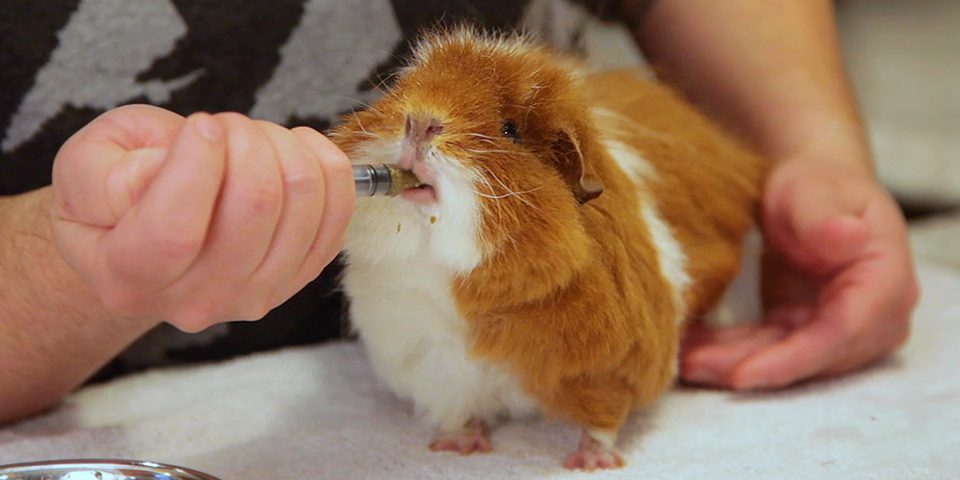
Using Fear-Free Tactics for Oral Administration in Guinea Pigs
From Denise F.:
“What is the easiest force-free way to get a guinea pig to open her mouth for syringe feeding or medication? She moves her head so fast that it is difficult to hit the moving target!”
Dr. Kohles:
As a prey species, guinea pigs are easily scared in unfamiliar situations. The best way to help your little one get used to syringe feeding is by using fear-free techniques, and plenty of positive reinforcement and conditioning to get them used to taking medication.
Positive reinforcement
Creating a positive experience for your guinea pig is the key to stress-free medication administration for both you and your pet. The best way to achieve this is to condition them to the overall experience of receiving medication. Offer a treat or favorite food before and after the potentially unpleasant event to create a positive association in your pet’s brain that “medicine” also means “yummy food.” This form of conditioning will reduce your little one’s anxiety surrounding not-so-fun tasks like taking medication. Be sure to give them high praise when the not-so-fun task is complete.
Use flavored medications
Ask your veterinarian about ways to make medications more palatable. Is it possible to add the medication to an unsweetened apple sauce without ruining the medication’s potency? While it can be more costly, some compounding pharmacies can add flavors to medications to make administration to picky piggies easier.
Burrito wrapping
Burrito wrapping, or swaddling, your guinea pig is essentially wrapping your guinea pig up in a towel. Swaddling them provides a comforting pressure and supports their whole body. It also allows you to control their head and legs, and helps protect their fur from getting messy during the medication administration process. Practice burrito wrapping your little one at other times than just giving the medication, so they do not start associating the act of being swaddled with a potentially unpleasant experience. Slowly introduce the towel being wrapped tighter and tighter until they are fully swaddled. Give your pet plenty of treats and lots of praise during these practice sessions.
Desensitization
You can help your pet be more relaxed by desensitizing them to the equipment that you will use during oral administration. In addition to swaddling, introduce them to the items you’ll be using to administer the medication, whether this is a spoon or oral syringe. Let them smell the medication bottle. Leave the items in their habitat while you carefully monitor them so they can check them out on their “home turf” where they’re most comfortable. Being familiar with the items involved can remove the fear of encountering something new.
Be patient
New experiences can be frightening, so taking it slow is important. If your pet is strongly resisting taking the medication, take a break. Don’t force it into their mouths, as this could cause them to aspirate and lead to more health problems.
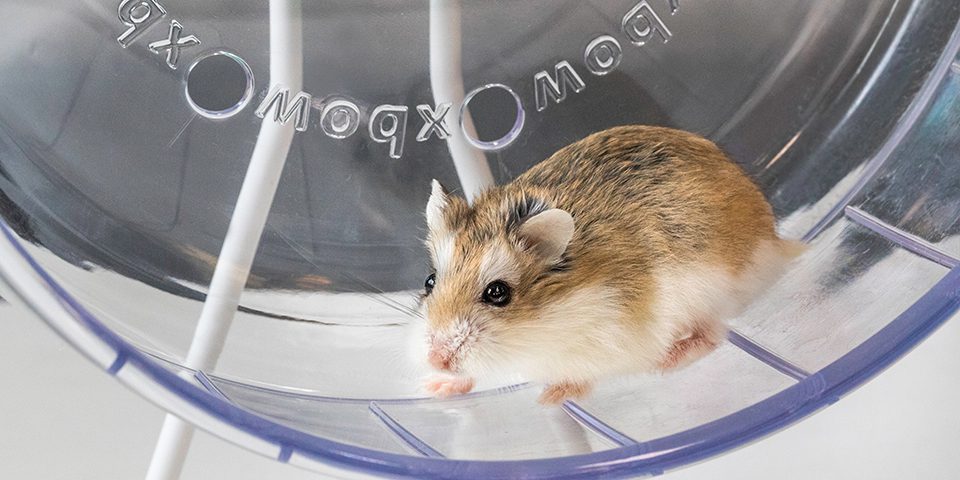
Tumors in Hamsters: Causes and Prevention
From Diane B.:
“Through experience I know that hamsters are prone to tumors. I’ve noted that it is believed that it’s through breeding, lifespan etc. Please could you tell me if the reasons are being investigated so that the likelihood of them happening become less?”
Dr. Kohles:
There are many different reasons that a hamster may develop a tumor. Like other small mammals with shorter lifespans, tumors grow quite fast in hamsters, so it’s important to see your veterinarian as soon as you notice anything abnormal.
Genetics
Some hamsters are genetically predisposed to developing tumors. If you are wanting to purchase an animal, working with a reputable breeder who prioritizes health and genetic diversity, or a rescue who can provide a family general history if they have had babies born in the shelter, may help lower the chances that your hamster develops tumors as they age.
Hormonal Factors
Hormonal imbalances or fluctuations related to aging and reproduction can affect cell growth and lead to increased chances for tumors. Discuss the pros and cons of spaying or neutering your hamster with your veterinarian.
Nutritional Factors
A poor diet can lead to nutritional deficiencies that can later on lead to tumor development. Unnecessary additives in food, or even overfeeding, can disrupt metabolic functions, leading to a higher likelihood of tumor formation. Providing your little one with a balanced and nutritious diet, consisting of a high-quality and uniformly nutritious fortified food, fresh veggies and healthy fats, and only occasional healthy treats, goes a long way to minimizing their risk. Make a point to avoid offering foods that contain high amounts of sugar and fats.
Environmental factors
Certain pollutants or carcinogens may increase the risk of tumors. Maintain a clean and hygienic living environment for your hamster, and pay special attention to the materials you use to accomplish this. Make sure you’re using hamster-friendly cleaners, bedding, and toys so they aren’t interacting with potentially dangerous materials.
Minimizing your pet’s stress by providing plenty of mental stimulation and removing environmental stressors can also support their overall wellbeing (while this blog about stress is focused on rabbits, much of the information can able be applicable to hamsters). Keep your hamster active and fit by exercising their body and mind with enrichment and time to explore outside their habitats.
Health Factors
While following the above guidelines can help reduce your hamster’s risk for tumors, some factors are beyond your control. Taking your hamster in for regular veterinary visits is key to catching and treating issues that can lead to tumor development, such as viral infections or chronic inflammation. Catching chronic issues early allows you and your vet to intercede before tumor development gets out of control.
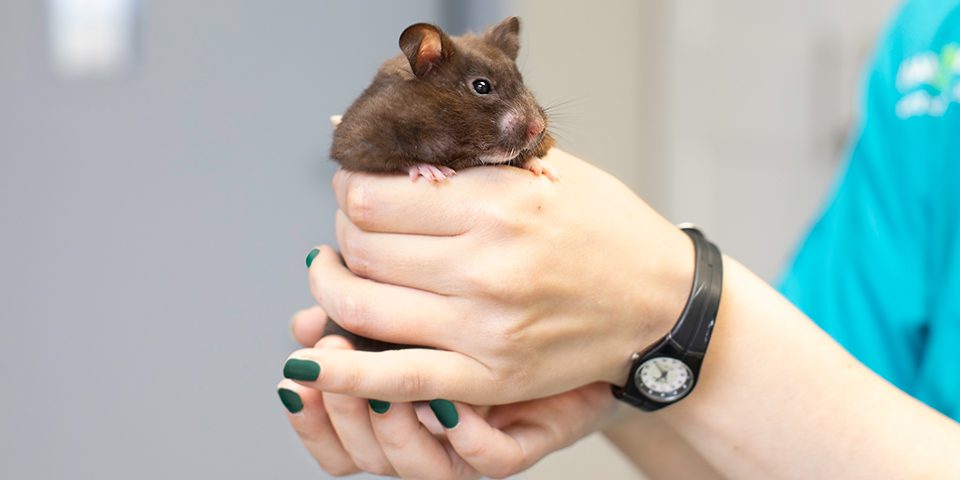
Dealing with Aggression in Hamsters
From Jasmine M.:
“Hello, sometimes I take in hamsters for people who can’t keep them they come in all different ages but a lot of the time I get a dwarf who has cage aggression. How can I tame that out of them? I try to place my hand in the enclosure, and they come to bite it, I’m supposed to rehome them if I can, but the biters tend to stay here since no one wants them.”
Dr. Kohles:
The first step to managing aggression in any animal requires an understanding of the root cause of the aggression so that you can implement strategies to address it. Remember that hamsters are prey animals, so their hesitancy in unfamiliar situations can easily turn into fear.
Identify triggers
Take time to observe your hamster’s behavior to understand the specific triggers that are leading to the aggression. The most common triggers in hamsters are related to territorial disputes (if there are multiple hamsters in an enclosure, or if an enclosure is too small), fear, stress, or discomfort.
Look at their environment
Take a close look at their habitats. Does each hamster have plenty of room for sleeping, eating, drinking, and going to the bathroom? If you are housing multiple hamsters together, are they overcrowded? Were they properly introduced?
Hamsters are territorial by nature, and providing ample habitat space can help minimize potential conflicts between them if they are living together. Competition for resources will increase the likelihood of aggression; if hamsters are housed together, there should be multiple locations where food and water are available, so fights are less likely to happen over resources. Always separate an aggressive hamster from the rest of the group and house them alone to avoid injuries.
Outside of the habitat, assess the area around your hamster’s habitat. Are there potential stressors in their surroundings? Other animals, sources of noise, or being in a place of especially high activity can lead to stress, anxiety, and redirected aggression.
Provide your hamster with plenty of enrichment by way of toys, tunnels, and lots of hiding spots to engage them both physically and mentally. This often helps in lowering stress and preventing boredom, two factors that can lead to aggression. Establish a predictable routine for feeding, playing, and cleaning the cage. Consistency can also help reduce stress and anxiety that can lead to redirected aggression.
Be patient and understanding
Changing any behavior takes time and dedication, so be patient and provide lots of positive reinforcement through comforting words and treats for appropriate behaviors.
Keep in mind that in some of these hamsters’ cases, they may have never been properly socialized. It’s also possible that a large percentage of their previous interactions with handling could have been negative experiences that were stressful or uncomfortable.
When interacting with your hamsters, avoid sudden movements or loud noises that may startle them. Approach them calmly and allow them to initiate interactions with you. Spend time socializing your hamster by introducing handling gradually while offering positive reinforcement like treats and pats. Keep your voice quiet and calm. Do all you can to create a positive association with handling.
Consult a veterinarian
If aggression persists despite your efforts to manage it, consult with your veterinarian. It’s possible that underlying health issues may be contributing to aggressive behavior due to pain or discomfort. Your vet can also provide guidance on behavior modification techniques.
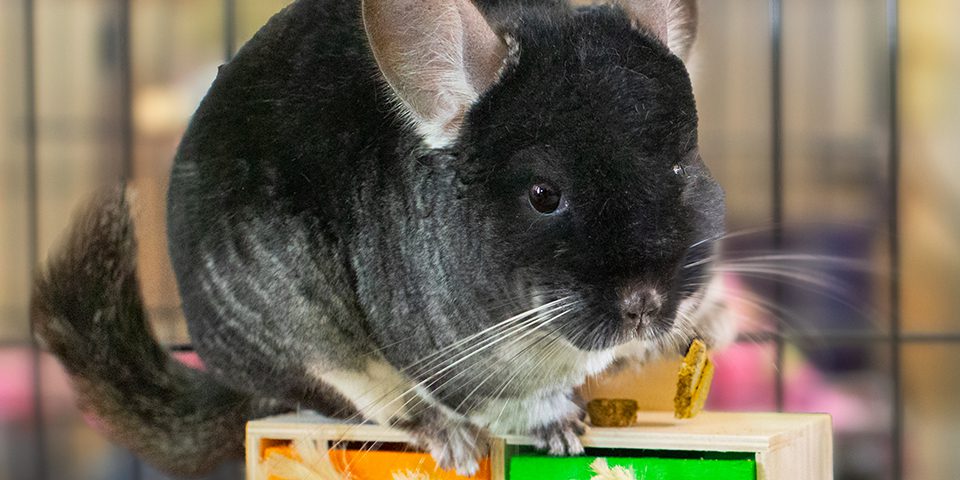
Supplementing Vitamins in Chinchillas: Do they need Vitamins C and D?
From Gaye F.:
“A chinchilla rescue person tells me chins need vitamin C. It seems to me vitamin C tabs have sugar not only bad for weight but dental caries. Do they need vitamin C and if so, how much and method of administering it? The 8-year-old has dental caries. My upstairs neighbor tells me because my chins are not exposed to direct sunlight, they need vitamin D supplementation. Do they? Thank you.”
Dr. Kohles:
Chinchillas do require vitamin C in their diet, but they have different dietary needs as compared to other small mammals. While guinea pigs can’t synthesize Vitamin C on their own, chinchillas can produce it on their own internally.
Chinchillas need vitamin D just like other animals, including humans. In the wild, these crepuscular mammals are most active during dawn and dusk when they get some sunlight. However, they primarily obtain their vitamin D through their diet. Providing a balanced diet of high-quality hay, species-specific fortified pellets, and species-approved greens and vegetables can help ensure that your chinchilla is receiving adequate nutrition for both vitamins C and D.
If you are concerned that your little one may need supplementation, I’d recommend speaking with your chinchilla-savvy veterinarian about options. They will be able to provide directions that will suit your specific pet. While our Natural Science supplements do not contain added sugars, it is imperative to address these concerns with your veterinarian, as excessive supplementation can cause health problems.
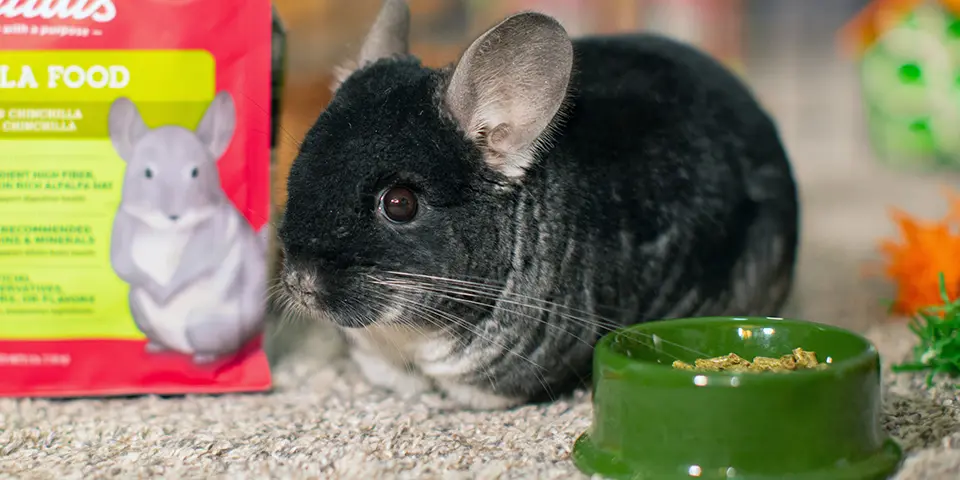
Cataracts in Chinchillas: Causes and Prevention
From Deborah C.:
“1) Raised a family of chinchillas spanning 24 years. My 18 years old. Is last survivor. 2) Used Oxbow products exclusively 3) Minimal treats 4) Almost all organic 5) “Cataracts” consistent: eye cloudiness ie: cataracts occurred in family that were 14-15 years old. Multiple times. 6) Why do chinchillas get cataracts? 7) Too much or improper nutritional components to utilize calcium? 8) It sure as heck isn’t “UV from sunlight” Thank you. Best regards with gratitude for Oxbow.”
Dr. Kohles:
There are quite a few different reasons that cataracts form. Some of them may be preventable, while others are difficult to avoid.
Genetic predisposition
Genetic traits, familial history, or mutations passed from parent to child can play a key role in the development of cataracts.
Aging
Just like people, as chinchillas get older, they can face changes in the structure of their lens. These structural changes can lead to the development of cataracts.
Nutritional deficiencies
Imbalances in essential vitamins and minerals can contribute to the development of cataracts.
Trauma
Eye injuries can lead to damage to the lens and increase a chinchilla’s risk for cataracts. Injuries can result from scratches, a bumped head, or foreign material entering the eye.
Metabolic disorders
Chinchillas with underlying metabolic conditions, like diabetes mellitus, can be at a greater risk for cataract formation.
Infection or inflammation
Chronic inflammation issues and bacterial, viral, or fungal infections can damage the lens of the eye, leading to structural changes in the lens and a higher risk for cataract development.
Toxicity
Exposure to heavy metals, pesticides, or caustic household cleaners can damage the lens and increase a pet’s risk of cataract development.
Prevention
Some things like genetic predisposition are hard to avoid unless you know your chinchilla’s family history. However, the best way to prevent eye issues in the future is through preventative measures.
Provide a balanced diet of chinchilla pellets fortified with the vitamins and minerals they need, high-quality hay, and species-appropriate fresh greens and vegetables. Avoid foods high in sugar or fat.
Keep their habitat clean and free from potential irritants or contaminants that could affect their eyes. Be careful of the cleaners that you use in their habitat or around the room they live in. Clean their food and water dishes regularly to minimize the chance of infections.
Remove any sharp objects or other hazards in their habitat and play areas that could cause trauma. Pet-proofing your home can play a key role in avoiding injuries. Only use toys and accessories that have been tested for use in chinchillas and are made of approved materials.
Handle your chinchilla with care, being sure to avoid applying too much pressure to their face.
It’s also vital to monitor them closely for potential eye issues and take them in for regular checkups to monitor their overall health with an exotic-savvy veterinarian.
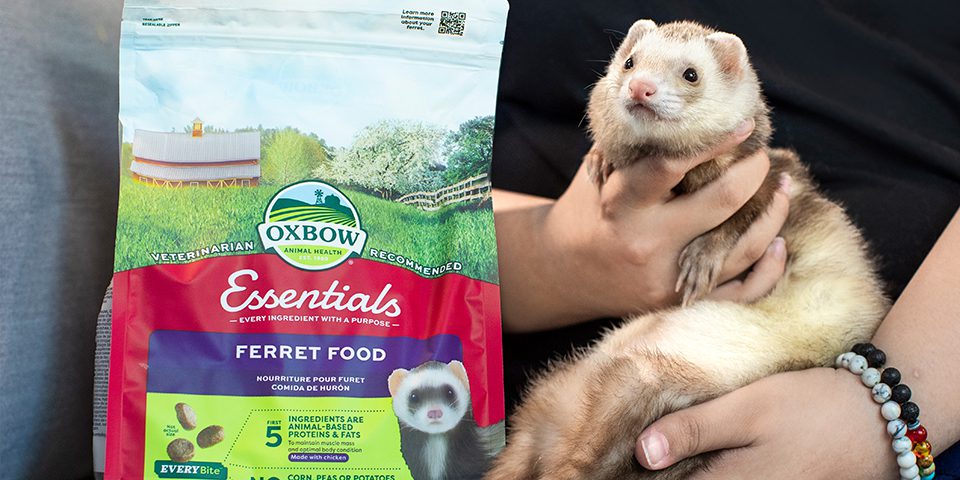
Best Nutrition for Ferrets
From Monica M.:
“I might be interested in getting a couple of ferrets someday and I’m wondering what the best food is for them. Some people say ferret pellets, some people say raw food, some people say a high protein dry cat food. I’m wondering what’s best? Probably raw food, but what about after that since that would be too expensive for most people including me.”
Dr. Kohles:
Ferrets are obligate carnivores, like cats, and require high levels of protein in their diet. In the wild, they largely consume mice, rats, and other rodents, but will also go after fish, birds, reptiles, and other small animals when the opportunity presents itself. Typically, the only plant material that a ferret will ingest is in the gut contents of their prey. As such, their digestive systems aren’t able to digest and utilize many plant-based ingredients.
Ferrets require a diet that is high in protein (<35-40%), fat (<20%), and low in fiber and carbohydrates (<5%). When considering a diet for your ferret, you should look for a diet that has the first five ingredients listed as being from an animal protein source. High-starch ingredients like corn, potatoes, and peas, as well as any vegetables and fruit, should be absent entirely since they are not optimal options for your ferret’s diet.
There is a lot of debate about the ideal diet for these furry pranksters. With raw diets, you have to be careful to avoid salmonella poisoning that could make your ferret very ill. As you mentioned, it can also be quite expensive. It’s important to use caution when offering cat food, as many domestic cat kibbles have plant-based ingredients. We always recommend sticking with a species-specific diet that has been formulated for the animal it is intended for. Oxbow now offers a ferret food that is designed specifically for ferrets’ dietary requirements.
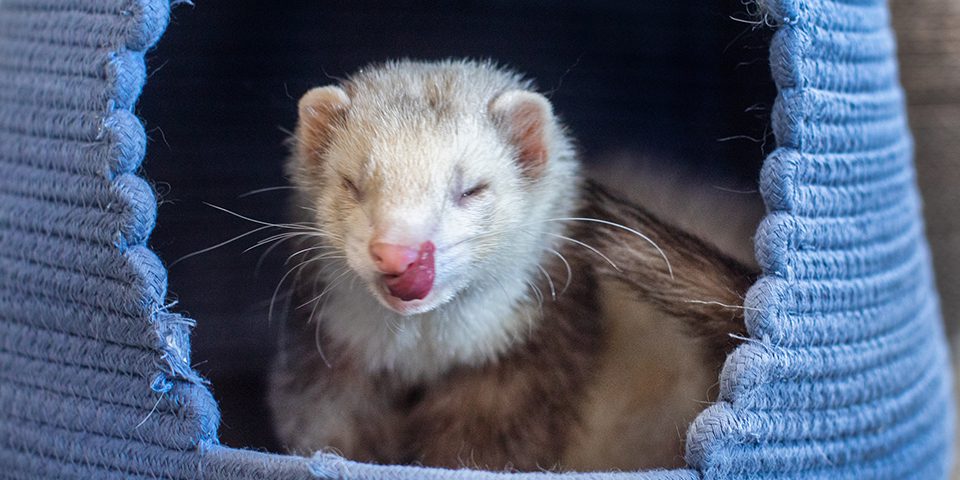
Itchiness in Ferrets: Potential Allergies and Bathing
From Karianne J.:
“I know that bathing ferrets isn’t always good for their skin, BUT…I have an incredibly itchy little man and he actually wakes me up scratching… I feel awful and with the weather getting colder I do not want him wet, trying hard to keep them healthy, also with this insane itchy thing…when he potties…its loud, and now my poor adrenal female is loudly farting. They saw the Dr. in October who said they had some kind of stomach issue and gave me betacillin or some antibiotic. They did the entire round and got their end of the year bath; she got her implant after treatment…and last week it started back up. They get Wysong and 2x a week soupies with Duk Soup. They are free roam except at night. Cage and litter are cleaned daily. How can I help my poor itchy guy and maybe knock down the loud…potty times.”
Dr. Kohles:
From the specific symptoms you are reporting, a food allergy may be the cause. When talking about allergies, there can be a lot of different things that can cause them, anything from pollen in the air, to ingredients in the food. Discuss with your veterinarian on how to conduct a food trial.
In the meantime, double-check that your diet is high in protein and does not have starch ingredients like corn, potatoes, peas, or other fruits and veggies. Plant-based ingredients are not ideal for ferrets and may be causing gastrointestinal upset…and plant-based ingredients may appear in more foods than you realize! Our Essentials Ferret Food is designed specifically for the nutritional needs of ferrets.
Be sure to not to bathe your itchy ferret too often, as this strips away the natural oils in their skin and fur, which can lead to worsening the dry, itchy skin. Working closely with your veterinarian will be the best way to find the underlying cause of your ferret’s issues.
If you asked a question that wasn’t answered here, please stay tuned. Dr. Kohles will be answering more of your Ask-a-Vet questions in the near future!
